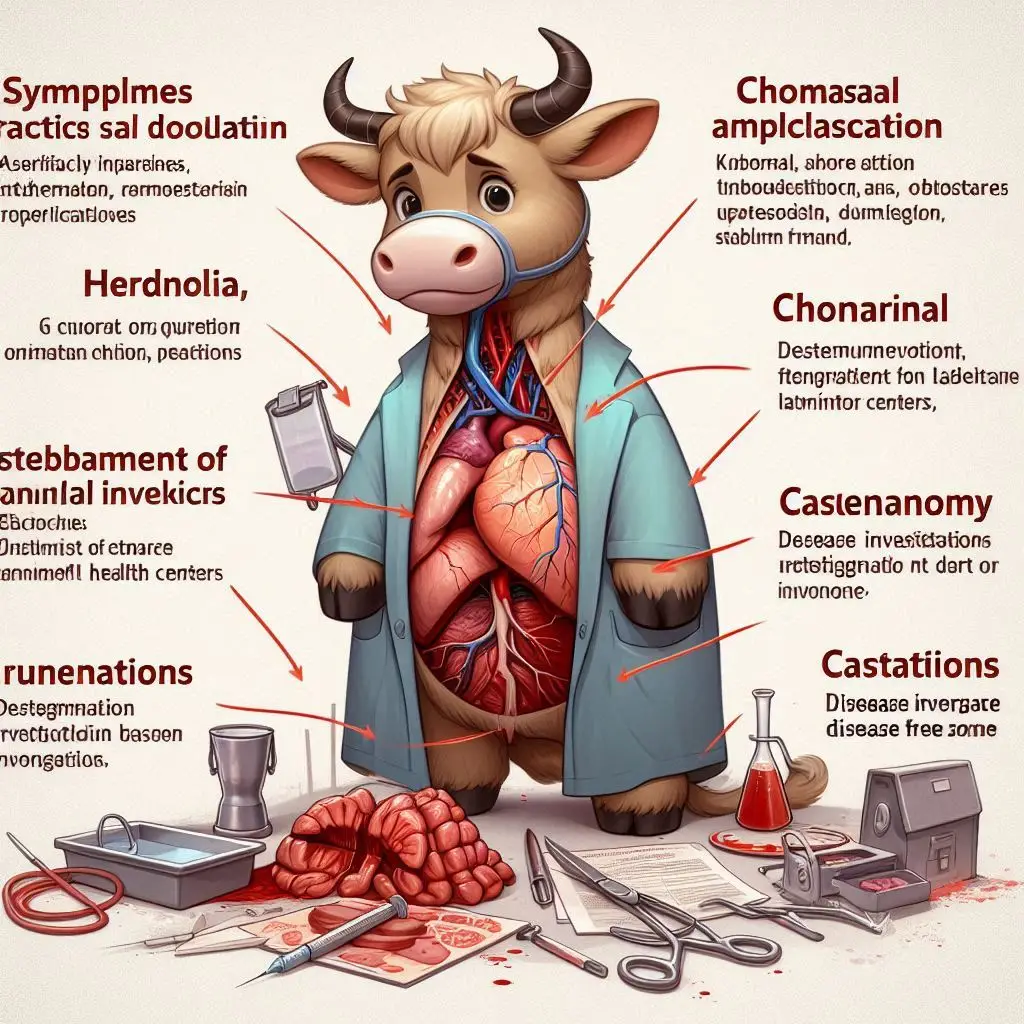Brucellosis
Introduction to Brucellosis
Brucellosis is an infectious disease caused by several species of the Brucella bacteria. This disease primarily affects livestock but can also infect humans. Understanding brucellosis is essential for preventing outbreaks and protecting public health. This article will cover the causes, symptoms, transmission, diagnosis, treatment, and prevention of brucellosis.
What Causes Brucellosis?
The Bacteria Behind the Disease
The Brucella genus includes several species that can infect animals and humans. The most common species include:
- Brucella melitensis: This species is primarily associated with goats and sheep. It is the most virulent strain for humans.
- Brucella abortus: Mainly infects cattle and can cause severe illness in humans.
- Brucella suis: Associated with pigs; it can lead to chronic infections.
- Brucella canis: This species infects dogs and can cause similar symptoms as other strains.
These bacteria are small, gram-negative coccobacilli that thrive in the reproductive organs of infected animals. They spread through various bodily fluids, including milk, urine, and placental tissues.
Transmission Routes
Humans typically contract brucellosis through:
- Consumption of Unpasteurized Dairy Products: Drinking milk or eating cheese made from infected animals poses a significant risk. For more information on dairy safety, visit the Centers for Disease Control and Prevention (CDC).
- Direct Contact with Infected Animals: Farmers and veterinarians are at higher risk due to their close contact with livestock.
- Inhalation of Contaminated Aerosols: This route is less common but can occur in laboratory settings or during animal handling.
- Ingestion of Under-cooked Meat: Eating meat from infected animals can also lead to infection.
Symptoms of Brucellosis
Initial Symptoms
Symptoms of brucellosis often appear 1 to 4 weeks after exposure. Common initial symptoms include:
- Fever
- Sweating
- Fatigue
- Headaches
- Muscle pain
Chronic Symptoms
If untreated, brucellosis can lead to chronic symptoms that may last for months or years. These can include:
- Joint pain
- Fatigue
- Recurring fevers
In some cases, brucellosis can affect organs such as the liver or spleen, leading to more severe complications.
Diagnosis of Brucellosis
Testing Methods
Diagnosing brucellosis requires specific tests to detect the presence of Brucella bacteria or antibodies against them. Common diagnostic methods include:
- Serological Tests: These tests check for antibodies in the blood. The CDC provides detailed information on testing methods.
- Blood Cultures: In some cases, doctors may take blood samples to culture the bacteria directly.
- Bone Marrow Tests: If other tests are inconclusive, a bone marrow test may be necessary.
Importance of Early Diagnosis
Early diagnosis is crucial for effective treatment. Delayed treatment can lead to chronic health issues or complications that may require more extensive medical intervention.
Treatment Options for Brucellosis
Antibiotic Therapy
The primary treatment for brucellosis involves antibiotics. Commonly prescribed antibiotics include:
- Doxycycline
- Rifampin
- Gentamicin
Treatment usually lasts for at least six weeks to ensure complete eradication of the bacteria.
Managing Symptoms
In addition to antibiotics, doctors may recommend medications to manage symptoms like fever and pain. It’s essential to follow medical advice closely during treatment to avoid complications.
Prevention Strategies
Vaccination in Animals
Vaccination plays a crucial role in preventing brucellosis in livestock. Vaccines are available for cattle and sheep and help reduce the incidence of infection in these populations. For more information on animal vaccination programs, check out the World Organisation for Animal Health (OIE).
Safe Food Practices
To prevent human infection:
- Always consume pasteurized dairy products.
- Cook meat thoroughly before consumption.
- Wash hands after handling animals or animal products.
Occupational Safety Measures
For those working with livestock:
- Use personal protective equipment (PPE) when handling animals.
- Follow strict hygiene protocols.
For more tips on occupational safety regarding zoonotic diseases, visit the National Institute for Occupational Safety and Health (NIOSH).
Epidemiology of Brucellosis
Global Distribution
Brucellosis is prevalent in many parts of the world, particularly in regions with poor livestock management practices. It remains endemic in countries across Africa, Asia, Latin America, and parts of Europe.
Trends Over Time
In recent years, efforts to control brucellosis through vaccination and public health initiatives have led to a decline in reported cases in some areas. However, it remains a significant concern in many developing countries where livestock farming is common.
Public Health Implications
Impact on Communities
Brucellosis not only affects individual health but also has broader implications for communities reliant on livestock farming. Outbreaks can lead to economic losses due to decreased productivity and increased healthcare costs.
Role of Health Organizations
Organizations like the CDC and WHO work tirelessly to monitor brucellosis cases globally and provide guidelines for prevention and control measures.
Conclusion: The Importance of Awareness
Understanding brucellosis is vital for preventing its spread and protecting public health. By recognizing its symptoms, transmission routes, and preventive measures, we can reduce the risk of infection among humans and animals alike.
For more pearls of Vets Wisdom:
Heritability and Genetic Correlations






Responses